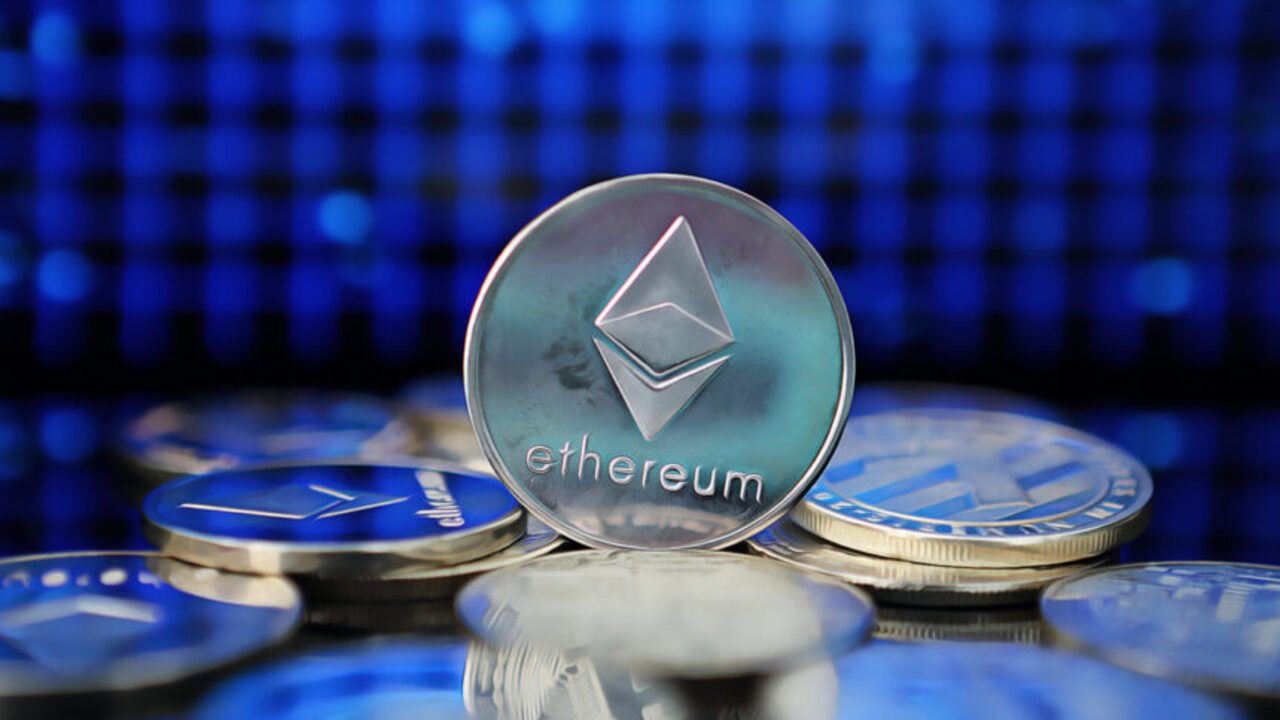Pi Network Cryptocurrency 2025: Price and Predictions
Pi Network Cryptocurrency launched in 2019 by Stanford graduates Dr. Nicolas Kokkalis and Dr. Chengdiao Fan, has emerged as one of the most intriguing and polarizing projects in the cryptocurrency space.
Thank you for reading this post, don't forget to subscribe!Designed to democratize digital currency by enabling mobile-based mining, Pi Network aims to make cryptocurrency accessible to everyday users without the energy-intensive hardware required by traditional Cryptocurrencies like Bitcoin.
By August 2025, Pi Network has transitioned from a speculative project to a functioning ecosystem with its Open Mainnet launch in February 2025, sparking widespread interest and debate.
This article provides a comprehensive analysis of Pi Network’s journey, its current state in 2025, technical and community developments, price predictions, challenges, and future prospects, while critically examining its place in the broader cryptocurrency landscape.
The Genesis and Vision of Pi Network Cryptocurrency
Pi Network Cryptocurrency was founded with a mission to create an inclusive cryptocurrency ecosystem, allowing users to mine Pi coins directly from their smartphones using the energy-efficient Stellar Consensus Protocol (SCP).
Unlike Bitcoin, which relies on energy-intensive proof-of-work mining, Pi’s mobile-first approach requires users to tap a button every 24 hours to earn coins, eliminating the need for costly hardware.
The project’s whitepaper emphasizes fulfilling Satoshi Nakamoto’s vision of decentralized currency by making Pi accessible to a global audience, particularly in underserved regions.
By 2025, Pi Network boasts over 60 million users across 230 countries, with a strong community presence in Asia, including South Korea, China, and India.
The network operates on a tiered system of miners (users who mine Pi), contributors (who invite others), and nodes (which validate transactions).
Its goal is to build a decentralized smart contract platform for real-world applications, from payments to decentralized applications (dApps).
The 2025 Open Mainnet launch marked a pivotal milestone, enabling external wallet transfers, exchange listings, and dApp development, transitioning Pi from a closed ecosystem to a broader blockchain economy.
Pi Network Cryptocurrency Milestones in 2025

Open Mainnet Launch
On February 20, 2025, Pi Network launched its Open Mainnet, a significant step that lifted restrictions on token transfers and enabled integration with external blockchains. This followed years of delays and a partial mainnet phase, with over 12 million users migrated by mid-2025.
The launch allowed Pi coins to be listed on exchanges like OKX, Bitget, and MEXC, though major platforms like Binance have yet to confirm listings despite strong community support (86% in a 2025 Binance community vote).
The initial listing price was $1.45, far below the hyped $50 expectation, and the price quickly fell to $0.70 before stabilizing around $0.35–$0.48 by August 2025.
KYC and Migration Challenges
Pi Network Cryptocurrency Know Your Customer (KYC) process, designed to ensure one-account-per-person and combat fraud, has been a cornerstone of its compliance strategy.
By January 2025, 14 million of the targeted 15 million users completed KYC, with a final deadline extended to March 14, 2025 (Pi Day). Technical glitches and migration bottlenecks frustrated some users, with only 12 million fully migrated to the mainnet by July 2025.
Failure to meet the deadline risks loss of mined coins (except those from the last six months), fueling community discontent.
Ecosystem Developments
Pi Network Cryptocurrency has introduced several initiatives to enhance utility and adoption:
- Pi Ad Network: A decentralized advertising platform where advertisers pay in Pi for ad space, and developers earn Pi for user engagement, creating a closed-loop economy.
- .pi Domains: Blockchain-based domain names bid for with Pi coins, accessible via the Pi Browser, aimed at boosting ecosystem utility.
- Pi App Studio: A no-code platform for developers to build dApps, with over 100 applications active by August 2025, though network activity remains low at under one transaction per second.
- PiFest 2025: Held from March 14–21, this event showcased 58,000 sellers across 160+ countries, with 1.8 million users engaging in Pi-based transactions via the Map of Pi app.
- Pi Hackathon 2025: Launched in August, this event offers 160,000 Pi in prizes to incentivize dApp development across finance, gaming, and tokenization, aiming to expand real-world use cases.
Technical Upgrades
Pi Network Cryptocurrency integrated Stellar Protocol 23 for enhanced Web3 interoperability and introduced a 200% token lockup incentive to boost mining rates and network integrity.
A $20 million investment in AI-powered humanoid robotics by Pi Labs signals diversification into next-gen technology.
Pi Network’s Price Performance in 2025

Pi Network Cryptocurrency price trajectory in 2025 has been volatile. After peaking at $3 post-mainnet launch, it dropped 78% to $0.60 by May, reflecting token unlock pressures and overhyped expectations. By August 2025, Pi trades at $0.35–$0.48, with a market cap of $3.13–$4.1 billion, ranking it among the top 50 cryptocurrencies. Key technical indicators include:
- Relative Strength Index (RSI): At 36.7–67, signaling neutral to mildly bullish momentum, with short-term oversold conditions suggesting potential rebounds.
- Moving Averages: Bearish EMA stack (20-day: $0.3881, 50-day: $0.4380, 200-day: $0.5564) indicates weak long-term momentum.
- Support/Resistance: Support at $0.33–$0.36, resistance at $0.38–$0.47. A breakout above $0.59 could signal a bullish reversal.
Price Predictions
Pi Network Cryptocurrency Analysts offer varied forecasts for Pi’s price, reflecting uncertainty and dependence on adoption:
- Short-Term (End of 2025):
- CoinDCX: $2.00–$2.80, driven by mainnet progress and bullish sentiment.
- CoinCodex: $0.46–$0.67, citing gradual adoption.
- Cryptonews: $0.31–$0.38, conservative due to limited exchange listings.
- ChatGPT (via 99Bitcoins): $1–$240, with $240 contingent on mass adoption.
- Mid-Term (2026):
- Cryptonews: $0.39 average, with bullish catalysts like dApp growth.
- 99Bitcoins: $5–$15, assuming exchange listings and bull market resumption.
- Long-Term (2030):
- CoinDCX: $890–$920, highly speculative, requiring Pi to achieve a $6 trillion market cap.
- Cryptonews: $0.45–$0.73, more realistic, tied to ecosystem growth.
- ChatGPT: $106–$399, based on global adoption and integration.
- DeepSeek: $200–$500+, optimistic about Pi’s global foothold.
These projections vary widely due to Pi’s nascent market presence and dependence on external factors like exchange listings and regulatory clarity. For context, a $1,000 price by 2030 would imply a market cap exceeding Bitcoin’s current valuation, which most analysts deem unrealistic.
Challenges Facing Pi Network in 2025
Despite its achievements, Pi Network faces significant hurdles:
- Token Unlocks and Supply Pressure: Over 630 million Pi tokens are set to unlock by August 2025, with 409 million already on exchanges. This risks oversupply, as seen in the 28% price decline from May–July 2025.
- KYC and Migration Delays: Technical issues and slow KYC processes have frustrated users, with only 12 million of 35 million users migrated by July. This limits liquidity and adoption.
- Limited Exchange Listings: Pi’s absence from Binance and Coinbase restricts trading volume and visibility. A Binance listing, backed by 88% community support, could be a game-changer.
- Regulatory Risks: The U.S. Supreme Court’s June 2025 ruling allowing IRS access to crypto transaction data could deter retail investors. Global regulations may also challenge Pi’s decentralized model.
- Community Skepticism: Delays and unmet expectations have led some to label Pi a scam, particularly in China, though its 100 million app downloads and active community counter this narrative.
- Low Network Activity: Despite dApp growth, transaction rates remain low, indicating limited real-world adoption. Scaling this is critical for long-term value.
Opportunities and Future Prospects
Pi Network Cryptocurrency unique mobile-mining model and massive user base position it for potential success if it overcomes current challenges. Key opportunities include:
- Mass Adoption: With 60 million users, Pi has a larger community than many established cryptocurrencies. Events like PiFest and merchant onboarding (e.g., Map of Pi app) could drive real-world use.
- dApp Ecosystem Growth: The Pi Hackathon and Pi App Studio could attract developers, increasing utility through finance, gaming, and tokenization dApps.
- Strategic Partnerships: Integration with Chainlink for price-pegging mechanisms and potential Binance listings could stabilize prices and boost liquidity.
- Global Reach: Pi’s strong Asian user base and focus on accessibility make it appealing in emerging markets, where mobile penetration is high.
Critical Analysis: Is Pi Network Sustainable?
Pi Network Cryptocurrency vision of an inclusive cryptocurrency is compelling, but its execution raises questions. The mobile-mining model, while innovative, lacks the computational rigor of proof-of-work or proof-of-stake systems, leading some to question its security and scalability.
The massive 100 billion token supply (7.9 billion circulating in August 2025) risks dilution, especially with ongoing unlocks. Moreover, Pi’s reliance on community hype without robust network activity mirrors the speculative bubbles of past crypto projects.
On the positive side, Pi’s user base and low-energy approach align with trends toward sustainable and accessible blockchain solutions. Its integration with Stellar’s protocol and focus on real-world utility (e.g., Pi Ad Network, .pi domains) suggest a viable path forward if adoption accelerates.
However, achieving the lofty price predictions of $500–$1,000 by 2030 would require unprecedented global adoption and a market cap rivaling Bitcoin’s, which seems improbable without major technological and regulatory breakthroughs.
Conclusion
In 2025, Pi Network Cryptocurrency stands at a crossroads. Its Open Mainnet launch, community-driven initiatives, and technical upgrades have solidified its presence in the crypto space, but challenges like token unlocks, KYC delays, and limited exchange listings temper optimism.
Price predictions range from conservative ($0.35–$2.80 by year-end) to speculative ($500–$1,000 by 2030), reflecting uncertainty about its adoption trajectory.
With 60 million users and growing real-world applications, Pi has the potential to become a leading cryptocurrency if it can scale its ecosystem and navigate regulatory hurdles.
Entrepreneurs and investors should approach Pi with cautious optimism, conducting thorough research and monitoring developments like Binance.













